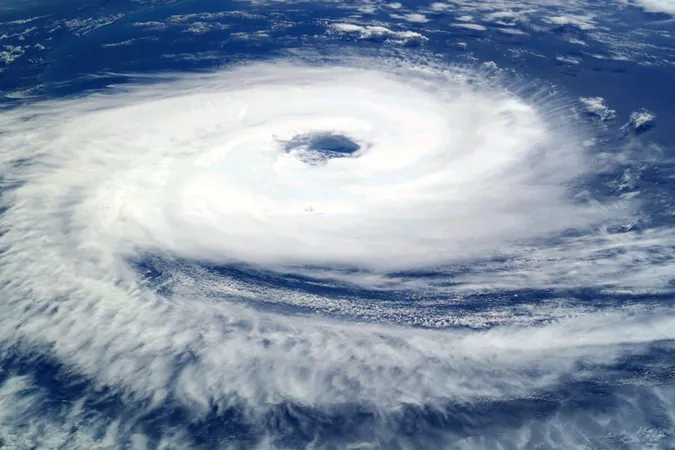
Cyclone Alfred's Devastating Impact: How Australia’s Iconic Beaches Are Forever Changed
2025-03-13
Author: Ting
A Storm of Historic Proportions
Cyclone Alfred was far from a typical storm. For almost two weeks, it lingered off the coast, generating relentless waves before hitting land as a formidable Category 4 cyclone near Mackay. The destructive force of the cyclone was compounded by its timing; it coincided with one of the year’s highest tides, setting the stage for catastrophic beach erosion. The combination of potent surf and storm surge obliterated entire sections of beach, resulting in steep cliffs and precarious dunes.
The Hardest-Hit Areas
The cyclone’s most devastating effects were felt in southeast Queensland and northeast New South Wales, particularly in regions south of its trajectory. Peregian Beach, a popular destination near Noosa, saw its width shrink by up to 30 meters, revealing deeper layers of sand beneath. Further along the coastline, the Gold Coast experienced erosion cliffs as high as three meters, uncovering seawalls that had been buried since the 1970s.
The storm surge peaked at half a meter above the high tide line, washing away foredunes and contributing to the erosion of established dunes further inland. Additionally, the islands of Bribie, Moreton, and North Stradbroke served as a natural buffer, shielding Brisbane from the storm's worst, but they too suffered severe beach erosion, compromising their role in protecting the coastline from future storms.
Where Did All the Sand Go?
The sand loss is part of a natural process exacerbated by strong waves and storms. When waves grow in intensity, they erode sand from nearby beaches and transport it offshore, where it can form underwater sandbars. These bars play a crucial role in diminishing wave energy before it reaches the shore, providing a temporary reprieve for the coastal areas.
However, the likelihood of sand returning is uncertain. Some sand has been swept into deeper waters or carried away by longshore currents, leading to potential recovery timelines extending over several years—or possibly longer if the sand is permanently displaced.
What Lies Ahead for Recovery?
While beaches tend to be resilient and many may begin the natural rebuilding process within months, dunes are slower to recover. Without the right interventions, it may take years for dune vegetation to regrow and restore stability to these essential coastal barriers.
Though nature often leads the restoration efforts, human intervention may play a critical role in expediting recovery. Strategies such as beach nourishment—adding new sand to eroded areas—are on the table, alongside potential construction of seawalls or revetments. However, these solutions can sometimes lead to increased erosion in adjacent areas, sparking a complex debate about the best path forward.
With experts warning that climate change and rising sea levels may amplify future storm impacts, the future of Australia’s beaches hangs in the balance. Will they be able to bounce back, or will Cyclone Alfred’s wrath be felt for generations to come? Only time—and decisive action—will tell.



 Brasil (PT)
Brasil (PT)
 Canada (EN)
Canada (EN)
 Chile (ES)
Chile (ES)
 Česko (CS)
Česko (CS)
 대한민국 (KO)
대한민국 (KO)
 España (ES)
España (ES)
 France (FR)
France (FR)
 Hong Kong (EN)
Hong Kong (EN)
 Italia (IT)
Italia (IT)
 日本 (JA)
日本 (JA)
 Magyarország (HU)
Magyarország (HU)
 Norge (NO)
Norge (NO)
 Polska (PL)
Polska (PL)
 Schweiz (DE)
Schweiz (DE)
 Singapore (EN)
Singapore (EN)
 Sverige (SV)
Sverige (SV)
 Suomi (FI)
Suomi (FI)
 Türkiye (TR)
Türkiye (TR)
 الإمارات العربية المتحدة (AR)
الإمارات العربية المتحدة (AR)